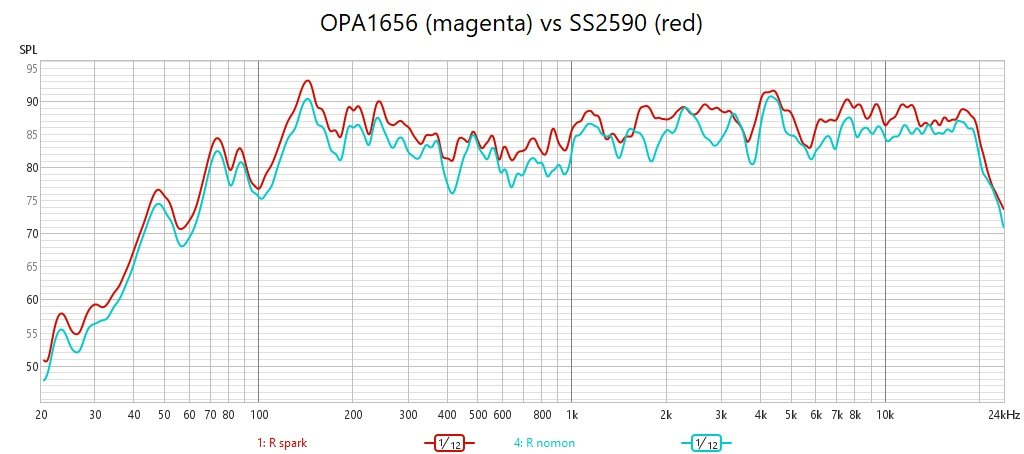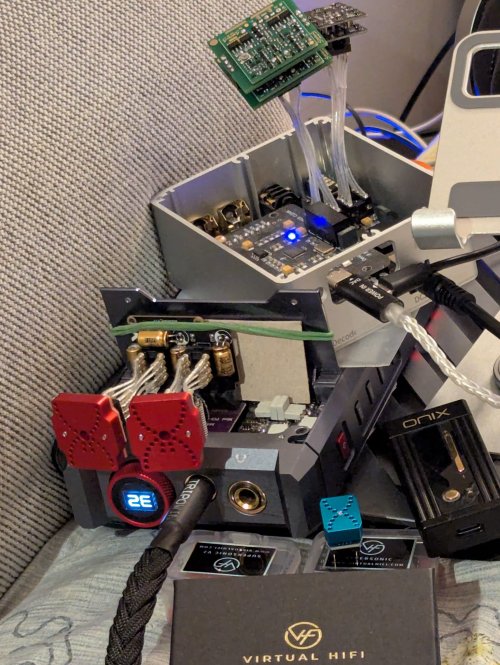qusp
Member of the Trade: Twisted Cables
- Joined
- Jun 18, 2008
- Posts
- 7,743
- Likes
- 62
i had asked them directly about the difference in their 637 models, the $70 vs the $250, and heres what i was emailed back about the product codes .../snip
and what part of my post made you think I wasnt aware of that?
qusp said:They are simply suffixes to describe grading and physical package (metal can to-99, DIP8, SOIC8 etc)
the thing is, whoever that idiot was, said that the opa637SM was 'harsh' when its the top spec part, is either attributing something else to the opamp, using it incorrectly (it needs to be used at 5x gain at least to be stable), or just making stuff up.
it was probably the same person that said
I found a site where they said the AM HA etc were ratings, the A's being the worse and the H's better quality. I wish I could find it again
this is the really stupid part, someone comparing AM and HA and saying A's were lower quality is just trying to sound smart, because they are the lowest spec metal can for 2 different companies and cannot even be compared, one is not even graded against the other. National and Ti used to be 2 different companies, only very recently Ti acquired National, but they are still not graded against one another. they do not make an OPA637HA and nor do they make an LME49710AM, so there is no basis for comparison.
WEll look what I found, the "Quality" grading i was talking about. Ahh who knows if it means anythingwhat i was emailed back about the product codes-
"The first letter, A','B','S' means OPAMP Grade' and the quality is better in following order.
A' < B' < S'
The second letter, U','M','P' means package type'.
P: DIP type
U: SMD(SOIC-8) type
M: Metal Can type(It protects against the noise and electricity)
The 637 line's feature is similar, but the quality is different.
Therefore the OPA637SM type is the highst price as the best sound quality."
the quality levels are not even really quality levels. to grade the parts they will just take a batch of the devices and bin them on performance in harsh environments, ie. how much they change/drift as they heat up (tempco: mostly if the parameters will drift in temperatures above 85 degrees....) they will call one lot SM, one lot BM and another AM based on the result. Because they have tested them they can then assure this level of performance/stability to customers, who may be using the parts in mission critical applications where lives, or large amounts of money are on the line if something goes wrong (like a plane or spaceship dropping out of the sky)
this process takes time and costs money, many will not even be tested because they know they wont sell as many SM parts, so there will be parts that could be graded SM in the stock sold as AM, as its not worth their time to test them, but they know they can call all of them at least AM. at the temperatures we use them at and the frequencies used in audio, we are not even close to stressing the lowest level.
so i have the 637au which came out two months ago, and this past week they have the new 637sm now for 4x the price. i wonder who will ever be able to compare the two with a good system. i run my prelude into the rotel 1085 5ch digital amp and wonder if there would be any difference.
what? AU that came out 2 months ago? the opa637 datasheet was last updated in 2000 and released before that, I personally have a set that i've had for nearly 3 years.
I can tell you without doing that test, forget it, hes gotta be having a laugh, some people are stupid, 250 is a joke, buy something else, buy a better amp. is that each or a pair? either is beyond crazy, but $250 each is criminal …
So can anyone reccomend anything warmer and detailed and nice Bass for a Auzentech soundcard?
I have LME49710 HA?
Ignored as usual.
yes I ignored that, because i'm not sure they make high quality opamps wit da goodz kickin bazz... you are much better off adding a proper headphone buffer. I gather the dac section of the board is fairly well done, but the headphone amp could definitely use some work and swapping an opamp isnt going to fix it. what it needs for tight and controlled bass, is good high current and low output impedance headphone drive.
or you could just use EQ to bump the bass....


























